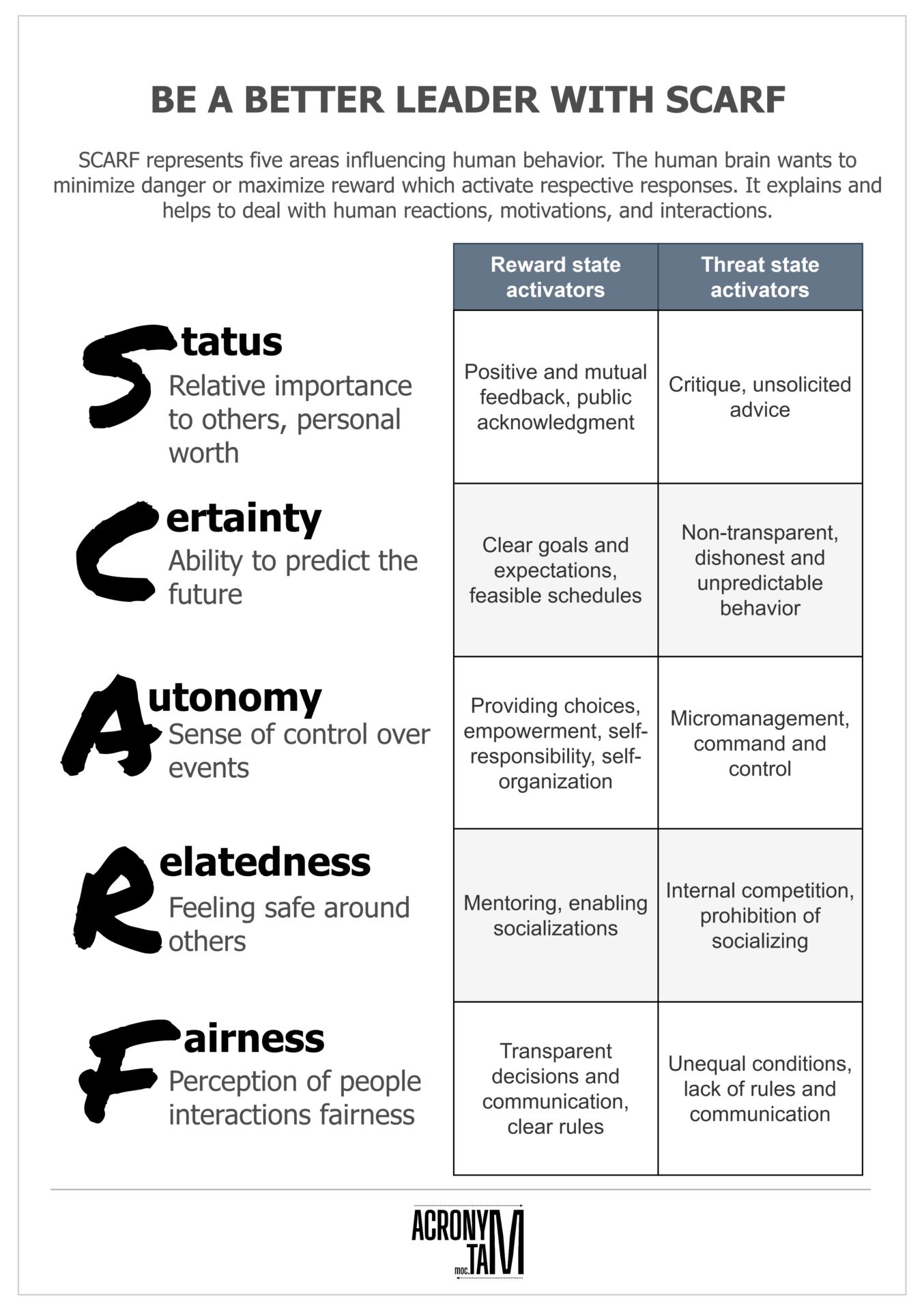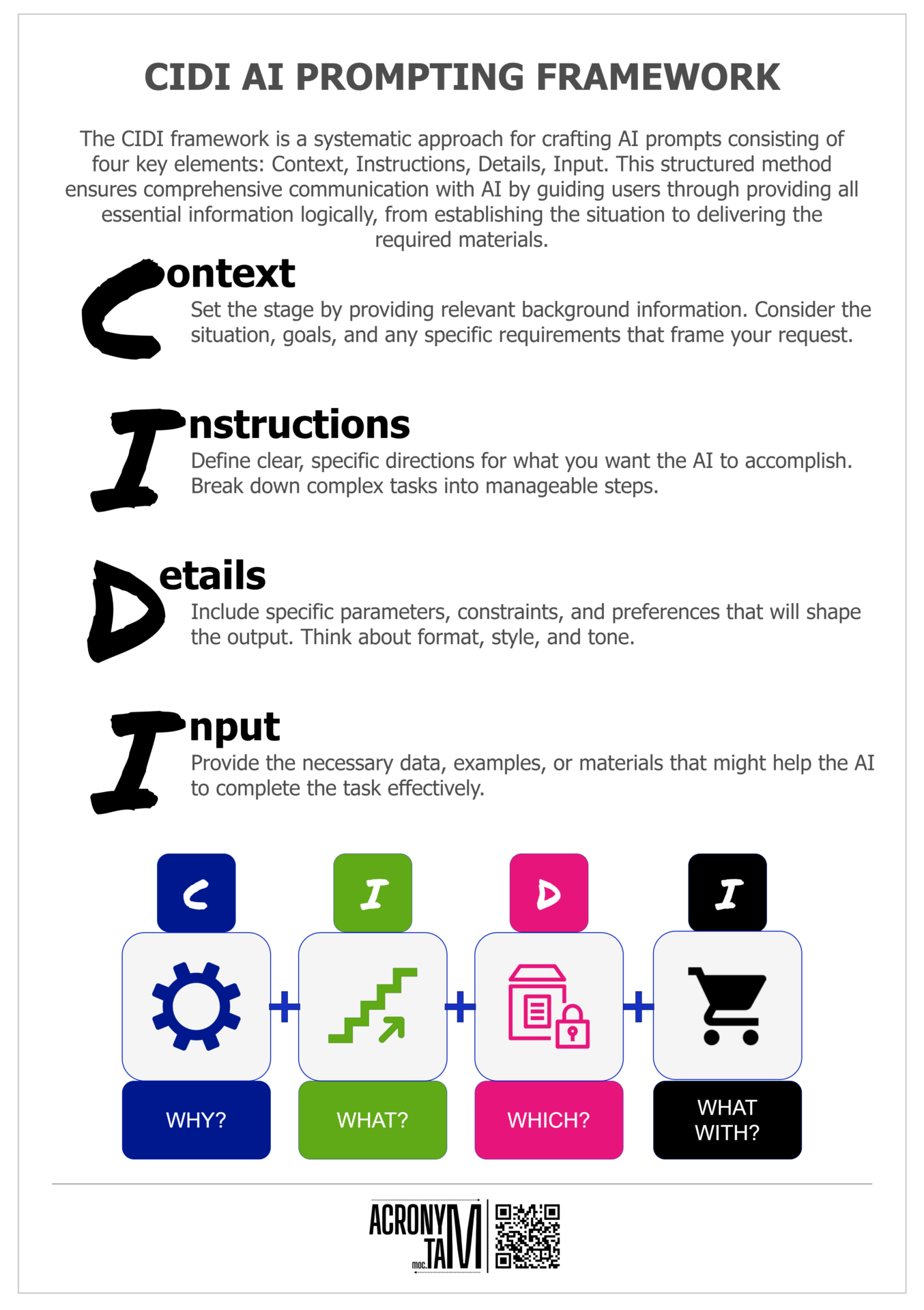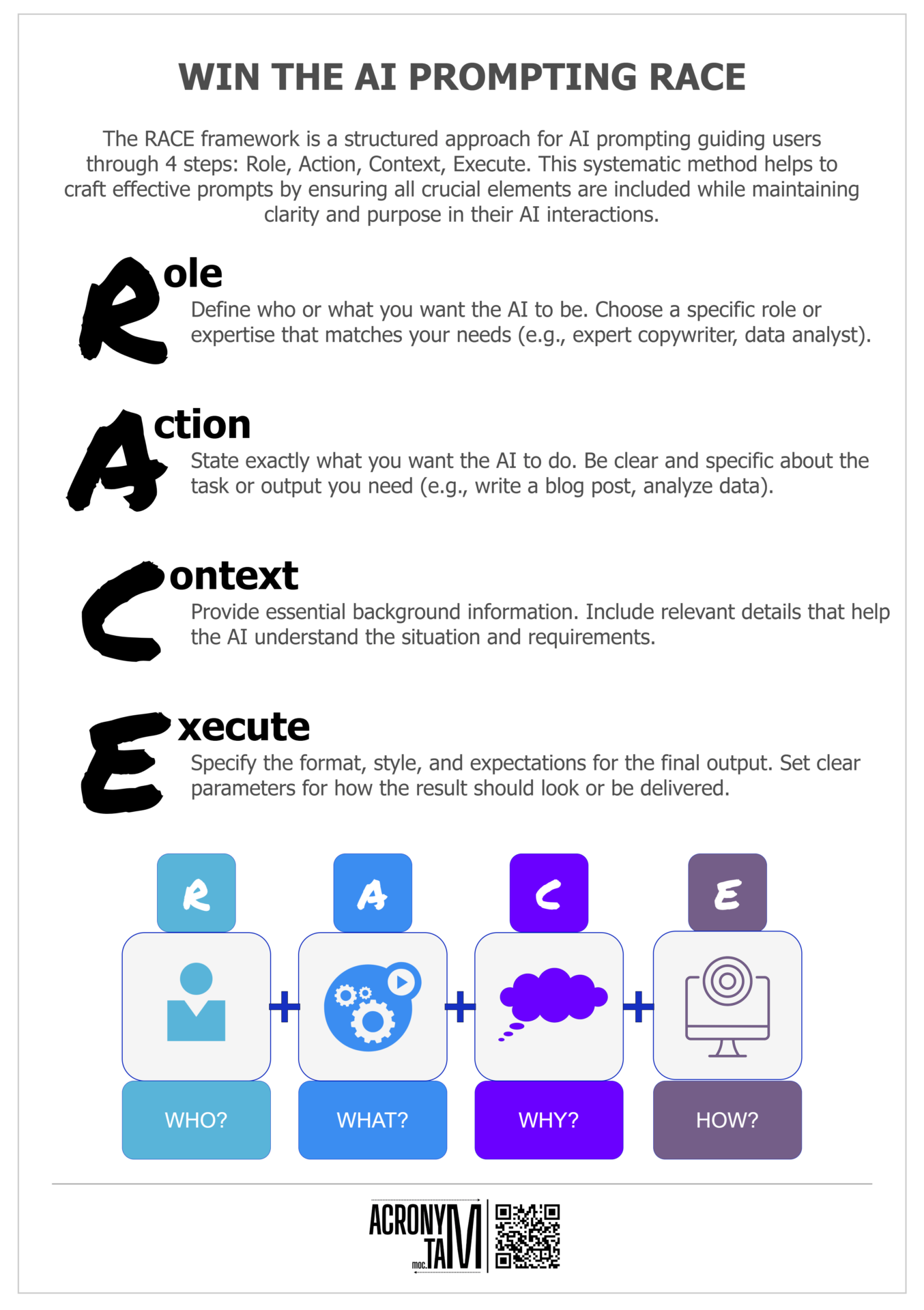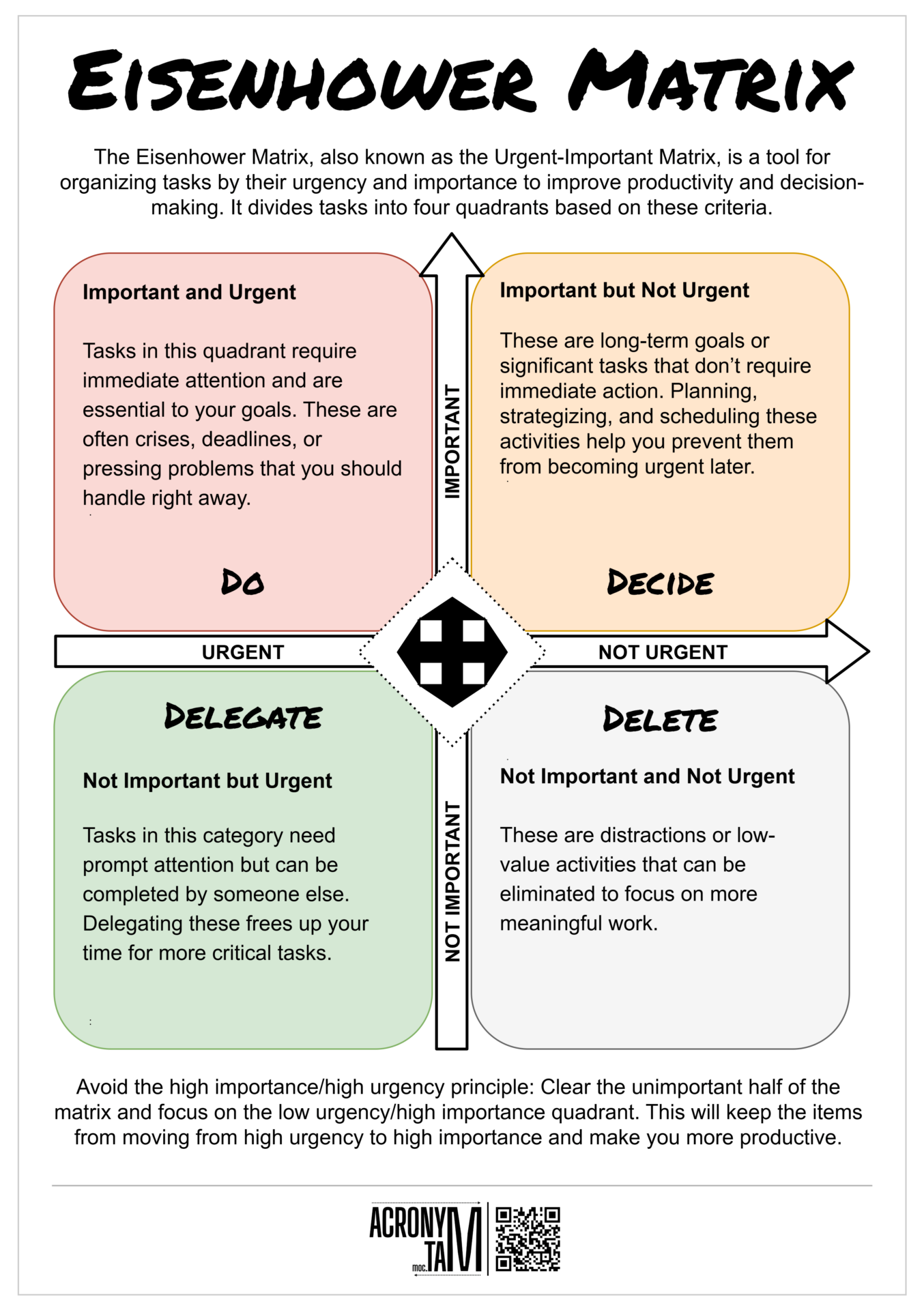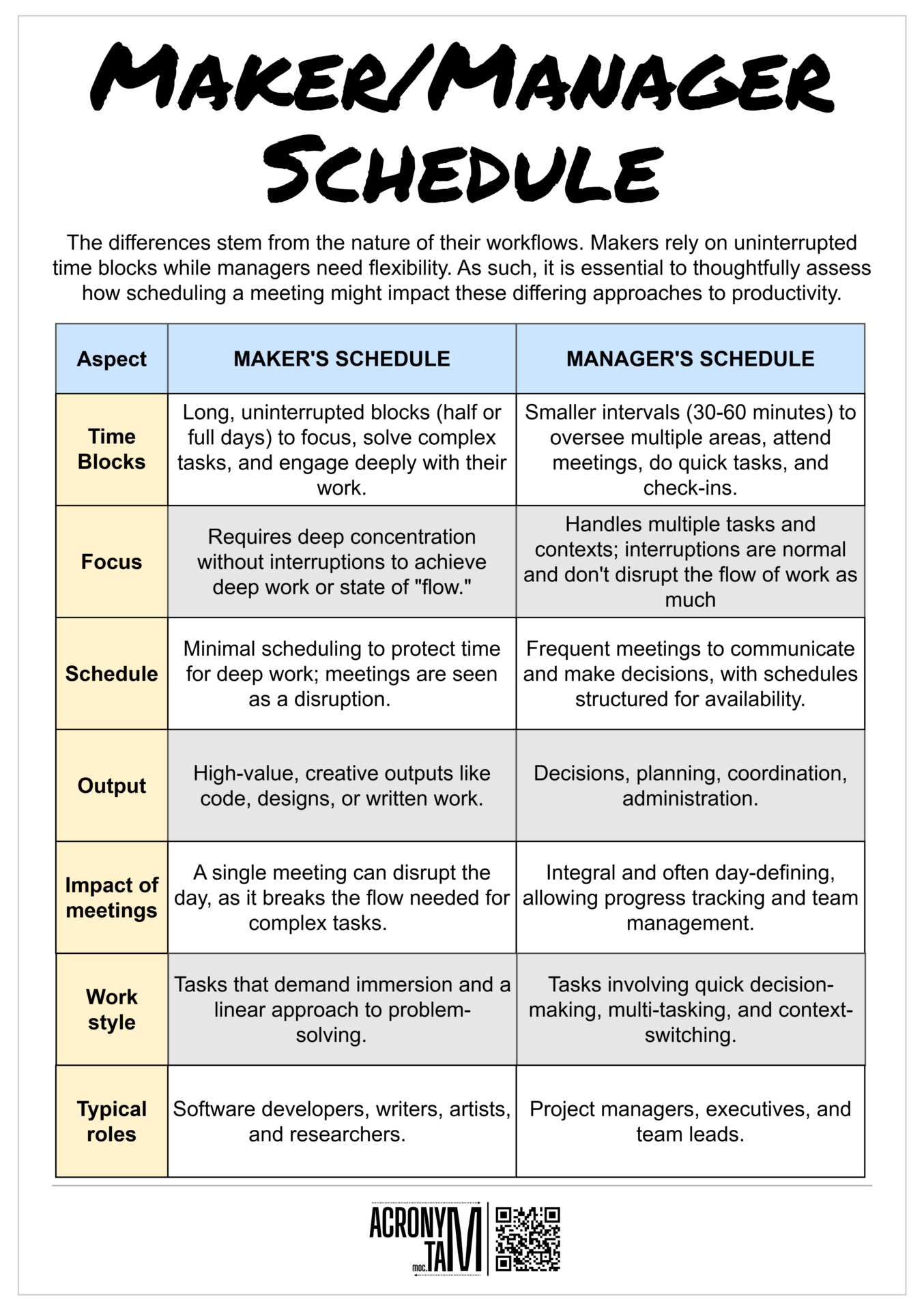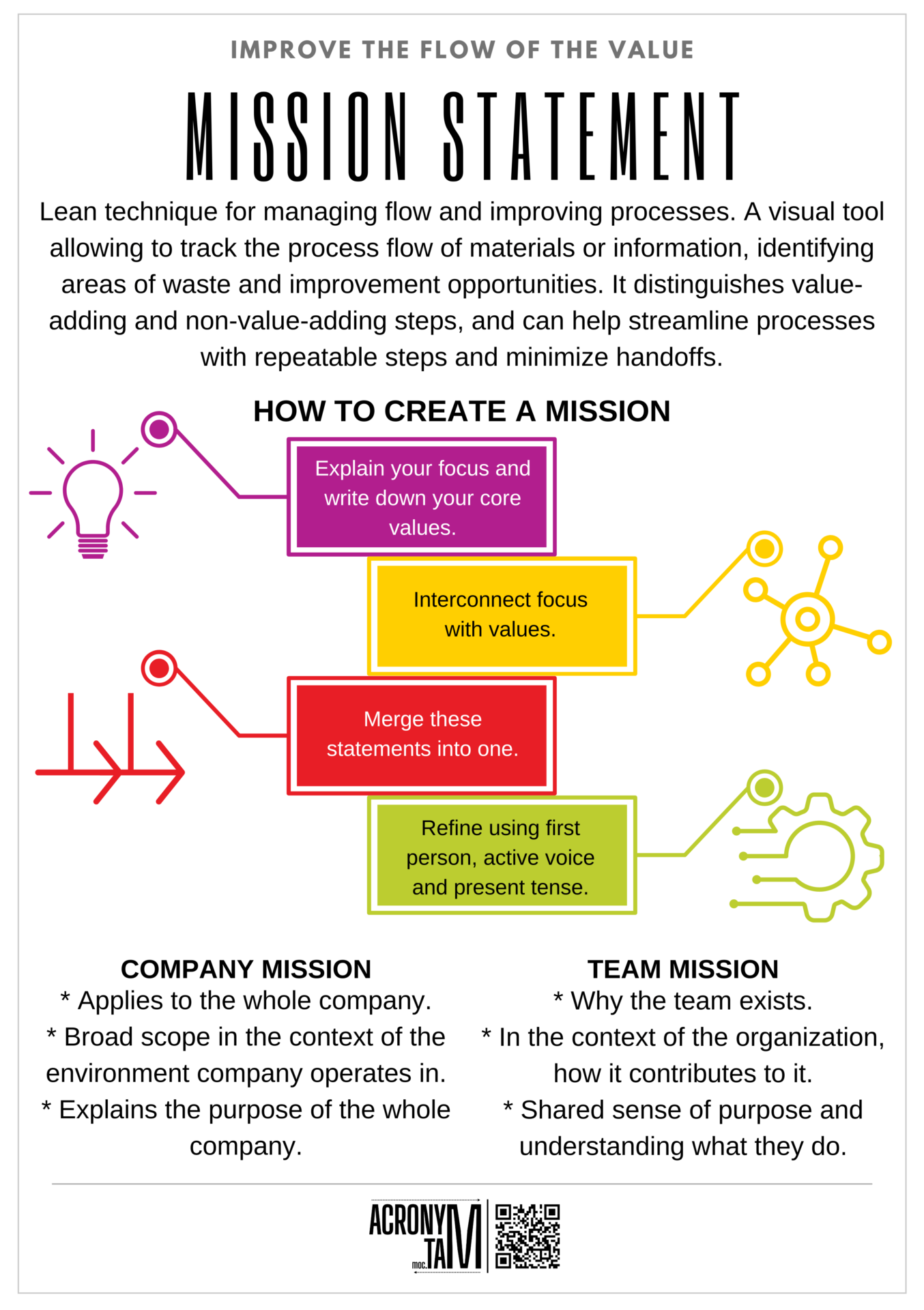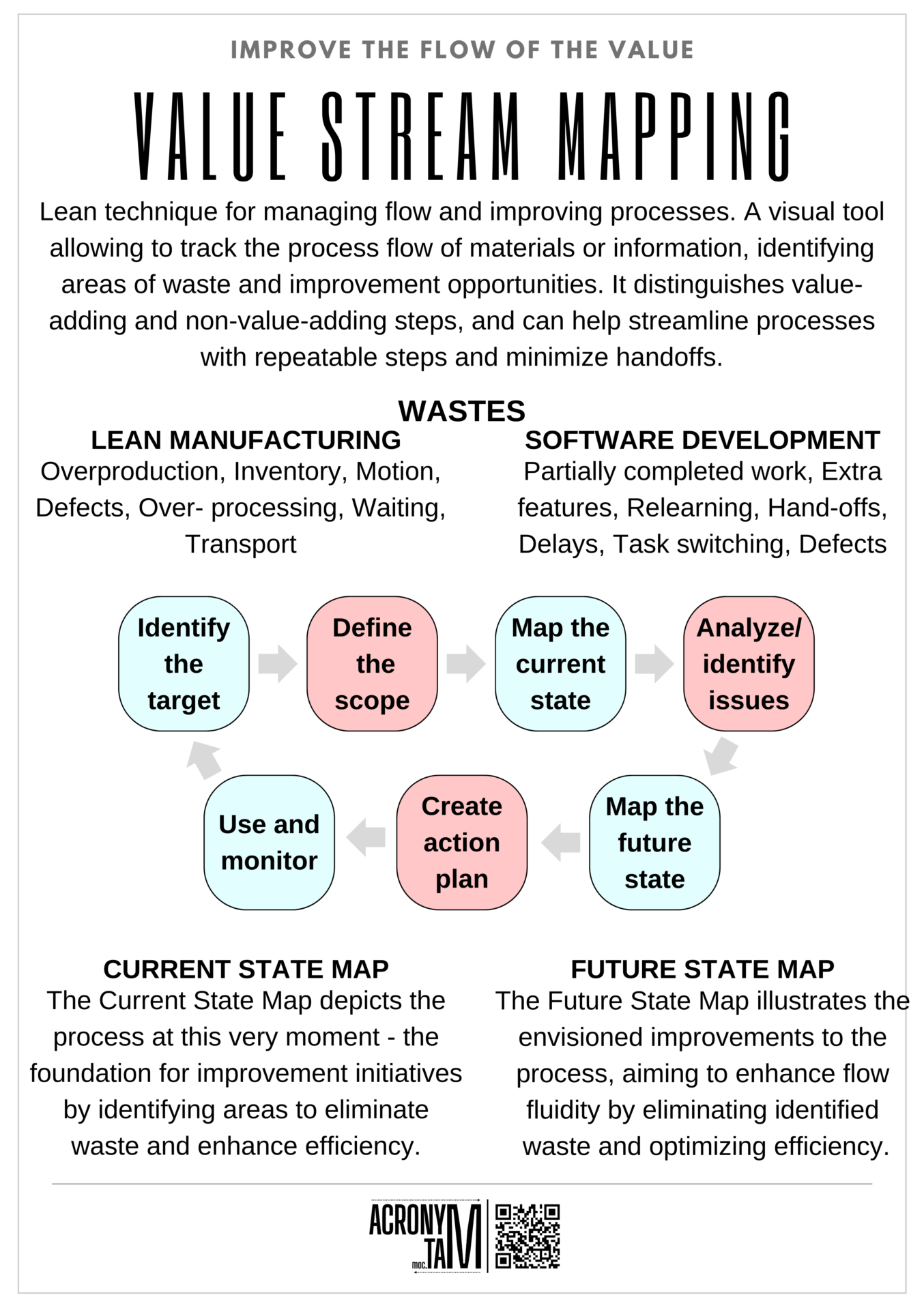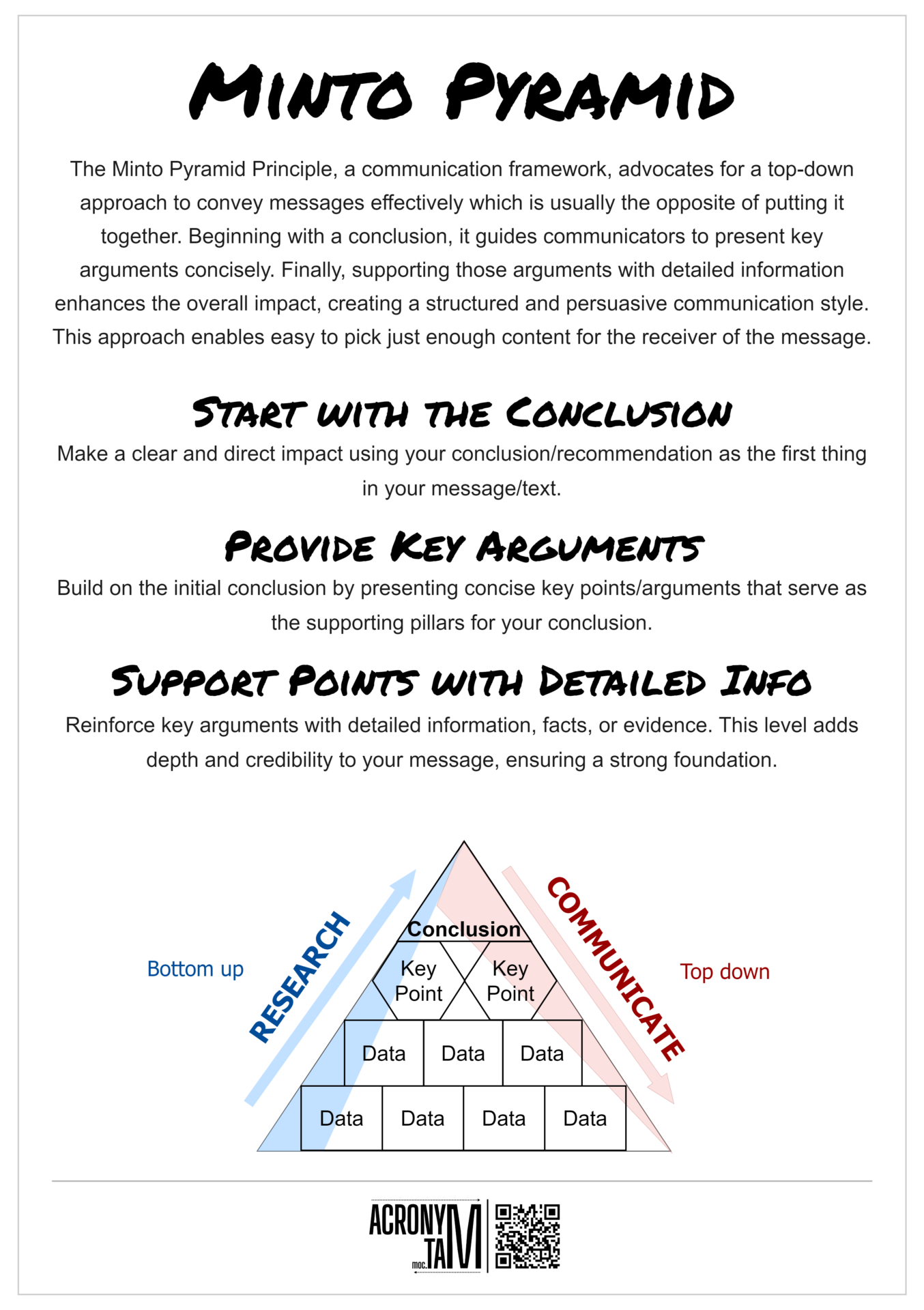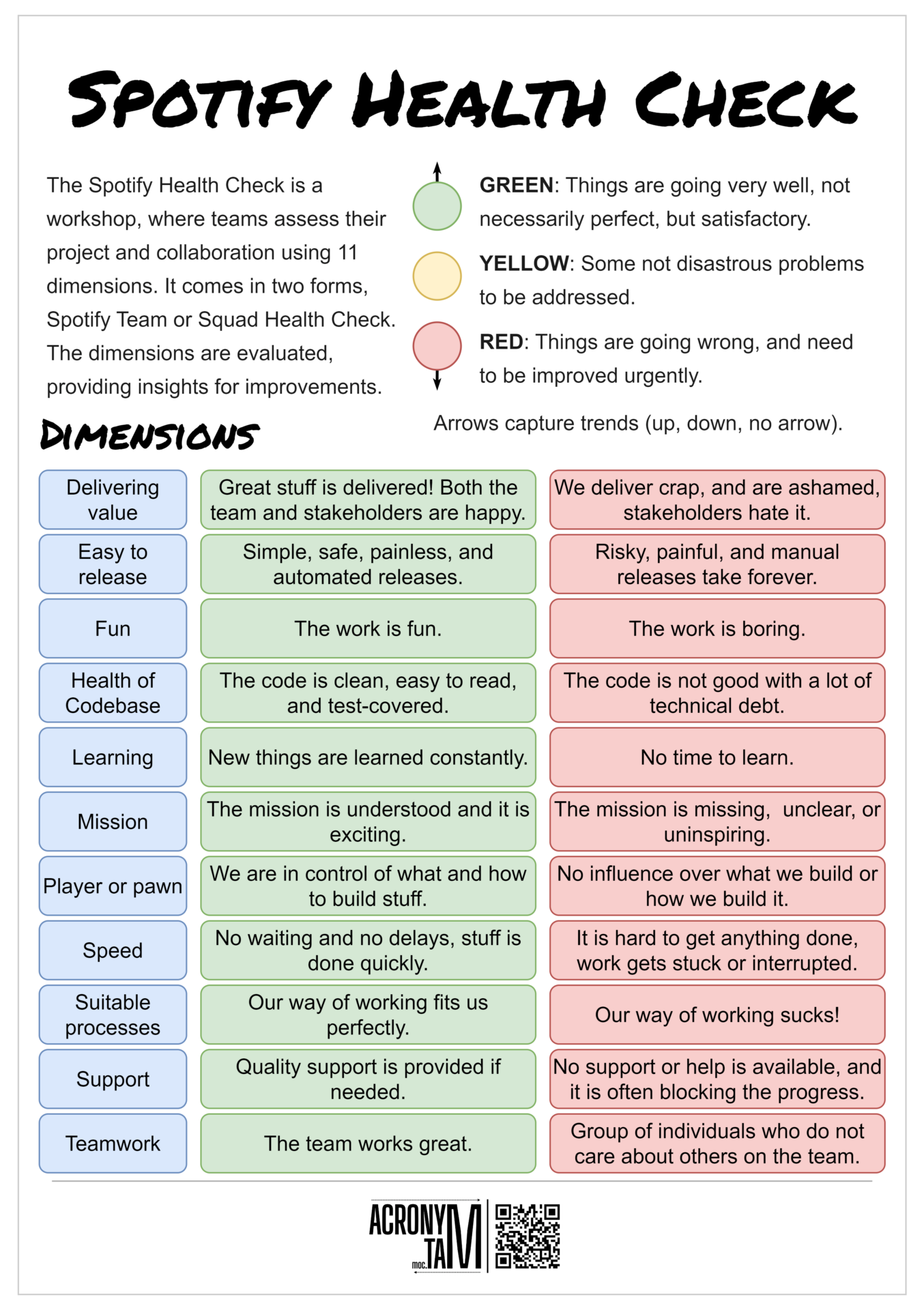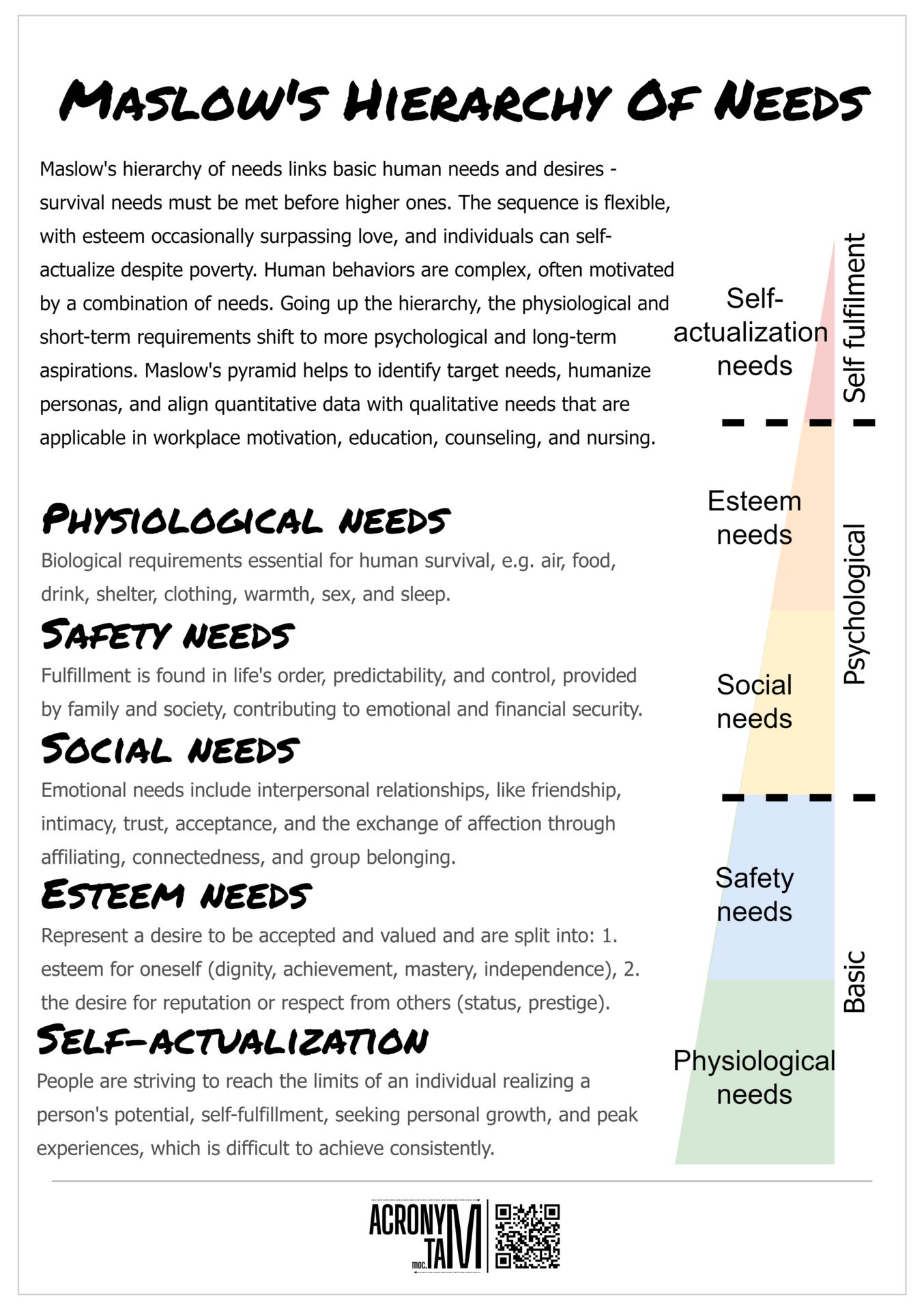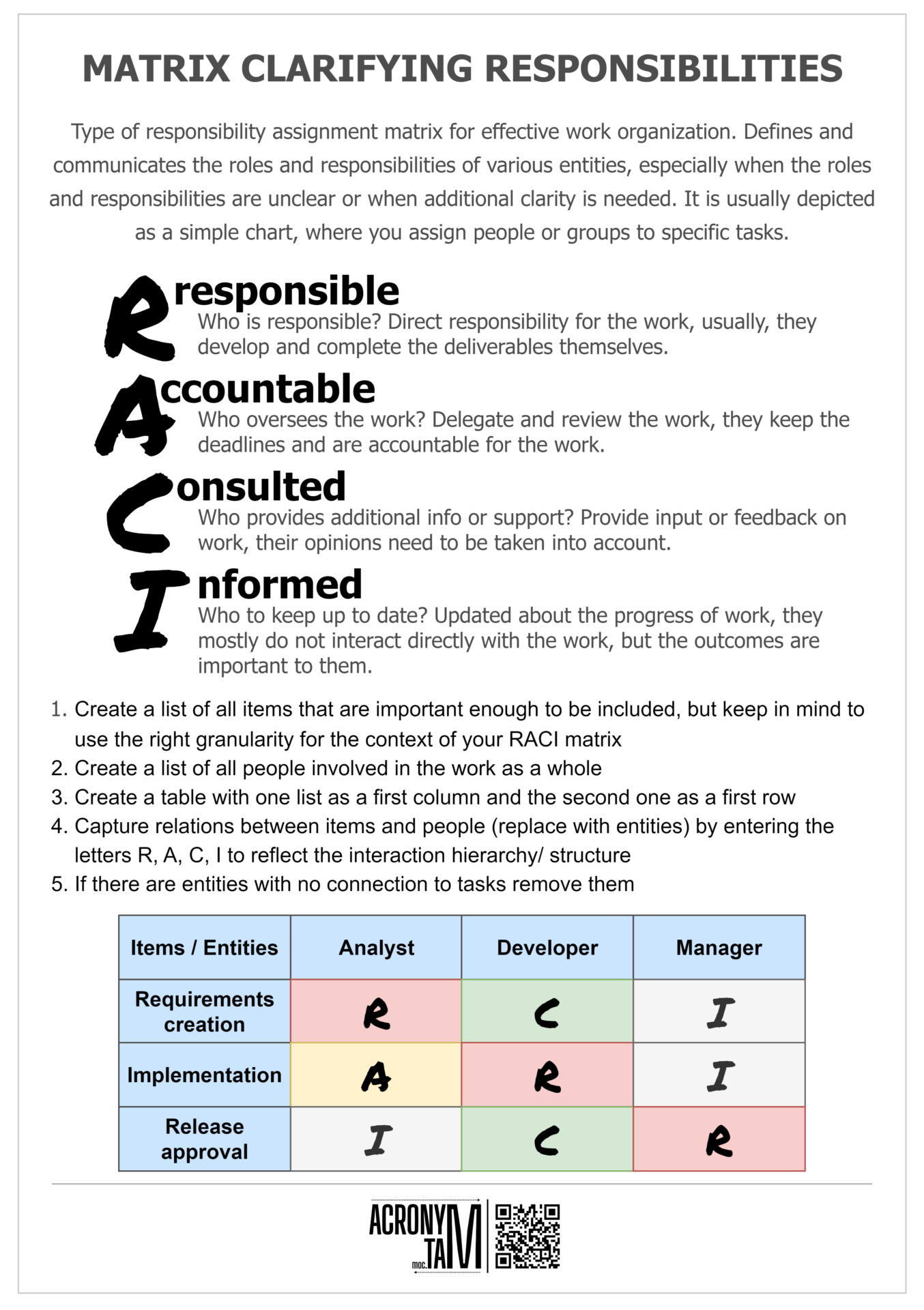SCARF
SCARF Model represents five areas influencing human behavior. The human brain wants to minimize danger or maximize reward which activate respective responses. It explains and helps to deal with human reactions, motivations, and interactions. Description Reward state activators Threat state activators Status Relative importance to others, personal worth Positive and mutual feedback, public acknowledgment Critique,...
Read more
Article
SCARF Model represents five areas influencing human behavior. The human brain wants to minimize danger or maximize reward which activate respective responses. It explains and helps to deal with human reactions, motivations, and interactions.
| Description | Reward state activators | Threat state activators | |
|---|---|---|---|
| Status | Relative importance to others, personal worth | Positive and mutual feedback, public acknowledgment | Critique, unsolicited advice |
| Certainty | Ability to predict the future | Clear goals and expectations, feasible schedules | Non-transparent, dishonest and unpredictable behavior |
| Autonomy | Sense of control over events | Providing choices, empowerment, self-responsibility, self-organization | Micromanagement, command and control |
| Relatedness | Feeling safe around others | Mentoring, enabling socializations | Internal competition, prohibition of socializing |
| Fairness | Perception of people interactions fairness | Transparent decisions and communication, clear rules | Unequal conditions, lack of rules and communication |

